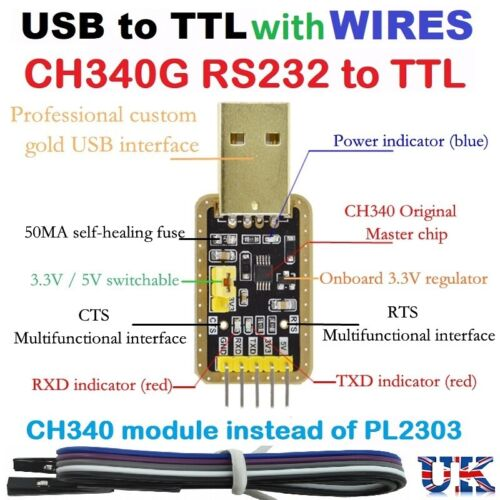Following on from discussions on Twitter, I think that I should do this.
It uses Tasmota devices and MQTT to show what is using power when.
An excellent writeup by @Brunty in his blog: https://brunty.me/post/energy-monitoring-2022-edition/
To start I need some Tasmota devices. They ain't cheap.
Can I convert my TUYA Smart devices to Tasmota. @Andysc says I can. Will I still be able to control them to turn TV ON & off at specified times automatically?
There is Tasmotrol, but it is written by a person (Yvonne Joh) who I don't know anything about. Does it feed stuff back to China like TUYA Smart?
I will need a home Server running 24/7, and at the moment all I have is a few spare black tower PC's.
Can I find a small unit that plugs into a mains socket and will support some storage? Looked for 'PC in a plug' and found some references to things like Sheevaplug, but they all seem to have ceased.
I'll have to get a Raspberry Pi to fit into my dead Humax box when they are available.
Suggestion that I should look at Balena_io and MING. I might have to learn some more programming if I went that route.
Keep thinking about it. Have discovered that Enphase uses MQTT, but I think that this is in old versions of the software. Good if it still does. How can I test it?
21 Nov. 22
Going to flash one of my TUYA smartplugs with Tasmotrol.
The device is a https://expo.tuya.com/product/627497 model J2-SU-E16
Following https://www.superhouse.tv/44-over-the-air-tasmota-conversion-with-tuya-convert/
Setting up Rasberry Pi (10)
It has flashed, Not sure if it was successful.
When plugged in, no light. But Wifi Network tasmota_02AC61-3169
MAC address 12:e9:be:e7:26:65
Have left a comment on the superhouse web page.
26 Nov 22. Have taken it apart and discovered that the chip in it is a common Popular one ESP-12S, and have unsoldered it from the unit. Have ordered a USB to TTL serial interface board so that I can program it.
Best link that I have found is:
https://templates.blakadder.com/ESP-12.html
This one has videos of programming them.
https://www.hackster.io/brian-lough/3-simple-ways-of-programming-an-esp8266-12x-module-c514ee
29 March 2023 looking at this to make it simple:
https://www.youtube.com/watch?v=8yxEgYvoHY0
I have now found tasmotizer:
-- peterm@peterm-MBB-34204H:~$ find -name "*tasmotizer*"
-- ./.local/bin/__pycache__/tasmotizer.cpython-38.pyc
-- ./.local/bin/__pycache__/tasmotizer.cpython-310.pyc
-- ./.local/bin/tasmotizer.py
-- ./.local/lib/python3.10/site-packages/__pycache__/tasmotizer_esptool.cpython-310.pyc
-- ./.local/lib/python3.10/site-packages/__pycache__/tasmotizer.cpython-310.pyc
-- ./.local/lib/python3.10/site-packages/tasmotizer-1.2.1.dist-info
-- ./.local/lib/python3.10/site-packages/tasmotizer_esptool.py
-- ./.local/lib/python3.10/site-packages/tasmotizer.py
-- ./.local/lib/python3.8/site-packages/__pycache__/tasmotizer.cpython-38.pyc
-- ./.local/lib/python3.8/site-packages/__pycache__/tasmotizer_esptool.cpython-38.pyc
-- ./.local/lib/python3.8/site-packages/tasmotizer-1.2.1.dist-info
-- ./.local/lib/python3.8/site-packages/tasmotizer_esptool.py
-- ./.local/lib/python3.8/site-packages/tasmotizer.py
But it won't run because it is missing some bits
following instructions to install tasmota from web i/f But it cannot find USB serial port.
https://tasmota.github.io/docs/Getting-Started/#needed-software
Web: https://tasmota.github.io/install/
Have downloaded basic Tasmota from http://ota.tasmota.com/tasmota/release/
This nearly works with the TTL-USB dongle that Ben gave me. It didn't react with Mine.
Here is another story about step-by-step programming a device with Tasmota.
https://blog.horner.tj/emporia-smart-plugs-tasmota/
This tells how to set Bootloader mode on GPIO15 (pin10)
https://docs.espressif.com/projects/esptool/en/latest/esp8266/advanced-topics/boot-mode-selection.html
7 April 2023.
So I need GPIO-15 Pulled low to enable flashing. This is the pin next to GND.
SUCCESS!
Following a hint online:
sudo apt-get install python3-pyqt5.qtserialport
and now this works:
python3 ./.local/lib/python3.8/site-packages/tasmotizer.py
and brings up tasmotizer.
But I need to find the config file.
On TAsmotizer, just click the little box for the section that you want to config, so I did and added the Wifi credentials, and then 'saved' this config, which sent it to the device. Fing found it, but the tasmotizer tablet app didn't. I think I need to set up a tasmotizer web server for this, which probably means using a Raspberry Pi.
Correction: Fing did not find it. and searching for a WIFI connection to it found nothing either.
Wrote to Horner re my problems
Hi, as suggested in your blog on this, I am asking for the benefit of your experience. I have an unbranded Smart Switch with TUYA software. It is very similar to the Lombex unit: https://templates.blakadder.
with a comment that New Tuya devices have replaced their Wi-Fi module with one incompatible
with Tasmota!!!
10/4/23 Likely conclusion: None of the Tasmota buolds loaded have had wireless working, so my
supposition is that Tuya are using an ESP-12 in this device that uses the Realtek wifi drivers rather
than their original ones.
I am going to test this hypothesis using these three links:
1] https://www.instructables.com/Getting-Started-with-the-ESP8266-ESP-12
2] https://www.instructables.com/ESP-12E-ESP8266-With-Arduino-Uno-Getting-Connected/
3] https://circuitjournal.com/programming-esp8266-over-wifi
This one 3] is about working with these variants ESP-12E / ESP-12F / NodeMCU so I'll leave it for now.
2] is about an 8266 E and builds on 1] so I'll start there.
It has a warning about not using the 3V3 from the USB-TTL adapter as it doesn't supply enough power.
I cannot get the Arduino IDE serial monitor to show anything.
Trying to get an Arduino program working for the ESP8266, and I just get this error:
"module 'time' has no attribute 'time_ns'" in /tools/mkbuildoptglobals.py and can't find a cure. Something to
do with the version of Python perhaps.
16/4/23 Interesting teardown of a couple of smart plugs:
https://www.hackster.io/news/teardown-of-a-smart-plug-or-two-6462bd2f275b
The TCP-Smart plug that I have contains this:
https://developer.tuya.com/en/docs/iot/wb2s-module-datasheet?id=K9ghecl7kc479
and looks like this.
2023-05-19
Discovered a new article about programming an ESP-12 with Tasmota
https://www.elektroda.com/rtvforum/topic3816654.html
It implies that the WB2S in the TCP switch has to be replaced with an ESP-12 device.



